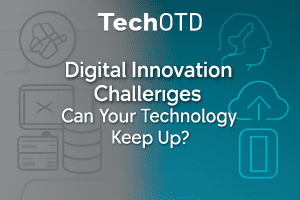Introduction
In today’s era of digital acceleration, choosing the right IT infrastructure—cloud or on-premise—is a major strategic decision that can fuel your enterprise’s performance, security, and innovation. As market demands shift toward agility, scalability, and compliance, understanding the advantages, challenges, and modernization trends for each option is essential. This blog unpacks core differences, sector-specific examples, benefits, limitations, and real-world adoption trends—so you can make an informed, future-focused IT choice that propels your business forward.
What Are Cloud and On-Premise IT Infrastructures?
-
Cloud: IT services (servers, storage, databases, networking, analytics, and software) delivered over the internet by external providers.
Explore Cloud Solutions -
On-Premise: Computing resources are installed and maintained on-site at your organization’s facility, with full direct control by your IT team.
IT Consulting & On-Premises Solutions
Key Differences: Cloud vs On-Premise
| Aspect | Cloud | On-Premise |
|---|---|---|
| Deployment | Off-site (third-party provider), accessed via internet. Cloud Services | On-site (organization’s premises), your IT manages setup. IT Consulting |
| Cost | Low upfront investment (OpEx); subscription/pay-per-use billing. AI Solutions | High upfront investment (CapEx); ongoing hardware/software costs. |
| Scalability | Elastic—scale up/down instantly. Data Analytics | Scaling requires buying/installing new hardware—slower and costlier. |
| Security & Control | Provider-managed security and compliance certifications; some loss of direct control. | Full direct data/control management; meets strict regulatory/industry needs. |
| Accessibility | Global access, ideal for hybrid/remote teams. | Physical/campus access; remote requires extra configuration. |
| Maintenance | Provider manages updates, patches, disaster recovery. | Your IT team maintains everything, from system updates to security. |
| Vendor Lock-In | Potential for dependency/migration challenges. | No vendor lock, but older systems can be hard/expensive to integrate. |
| Performance | Flexible capacity, variable latency based on network quality. | Direct control for ultra-low latency and critical workloads. |
Benefits & Risks: Cloud vs On-Premise
Cloud Benefits
-
Agility: Deploy new resources, apps, and sites quickly—supporting market expansion and innovation.
-
Cost-Efficiency: Only pay for what you use; no expensive upfront hardware.
-
Reduced IT Burden: Provider manages uptime, upgrades, and security.
-
Business Continuity: Robust backup and disaster recovery.
-
Remote-Ready: Enables global collaboration and hybrid teams.
Cloud Risks
-
Internet outages can cause downtime.
-
Less direct control over sensitive data.
-
Vendor lock-in risk if not planned for from the start.
-
Ongoing operational costs.
On-Premise Benefits
-
Full Control: Customize security, compliance, hardware, and integrations for your needs.
-
Regulatory Compliance: Simpler to meet industry/national data regulations (e.g., finance, healthcare).
-
Performance: Low latency for mission-critical real-time operations.
-
Customization: Tailor IT systems for unique or legacy workflows.
On-Premise Risks
-
Large upfront investment in hardware/facilities.
-
All maintenance, upgrades, and support handled internally.
-
Scaling and modernization can be slow and disruptive.
-
Requires a larger, skilled IT team.
Enterprise Use Cases & Industry Examples
When Cloud Excels
-
Retail: Instantly scale resources for sales peaks and geographic expansion.
-
SaaS/Startups: Launch quickly, experiment safely, avoid infrastructure investment.
-
Remote Collaboration: Enable global teams, file sharing, secure mobile and desktop access.
-
Data Analytics/ML: Run big data or AI workloads dynamically.
When On-Premise Is Ideal
-
Banking/Finance: Regulatory oversight, data residency, high-frequency trading.
-
Healthcare: HIPAA, medical record security, legacy system integration.
-
Energy/Government: National security, control over access, strict privacy compliance.
Modern Trends: Hybrid and Multi-Cloud
Today’s enterprises often blend cloud and on-premise environments (“hybrid” or “multi-cloud”) to balance speed, compliance, and cost efficiency.
-
Hybrid: Keep sensitive/regulated workloads on-premise and leverage cloud for agility, collaboration, and scale.
-
Edge Computing: Combine on-premise/edge servers with cloud for ultra-fast operations (e.g., smart manufacturing, logistics).
Stay ahead: Contact TechOTD’s experts for a custom roadmap
Conclusion
There’s no universal choice—your decision should reflect your unique business goals, industry requirements, and growth strategy.
-
Choose cloud for agility, cost savings, and digital transformation.
-
Choose on-premise for total control, compliance, and customized performance.
-
For many, a hybrid strategy maximizes the advantages of both worlds.
Ready to transform your IT?
Visit TechOTD’s solutions hub or connect with our experts to shape the future of your enterprise IT.
FAQ
1. Is cloud or on-premise more secure?
Cloud vendors offer strong security, but on-premise gives you direct oversight. The safest path depends on compliance needs and your IT team’s expertise.
2. Which option costs less long-term?
Cloud is cheaper up front and for dynamic workloads; on-premise may save money at scale, but needs careful management.
3. Can enterprises mix cloud with on-premise?
Yes—the hybrid approach is powerful for balancing flexibility with control.
4. How do I avoid vendor lock-in with cloud?
Choose platforms supporting open standards and plan migration strategies early.
5. Is on-premise IT outdated?
No. It’s vital for compliance-heavy sectors and advanced when integrated with cloud or edge.











